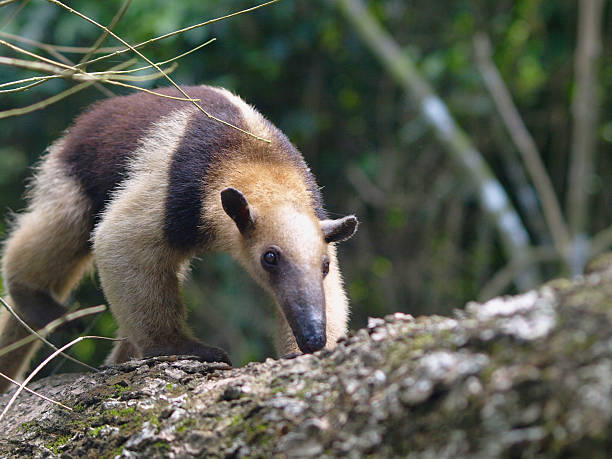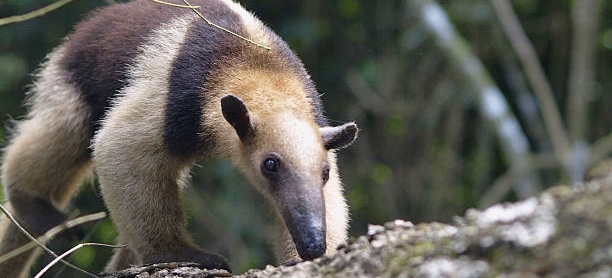ANIMAL: Southern Tamandua Tamandua tetradactyla Type of Animal: Anteater Habitat: Forests, savanna, thorn scrub, scrub forest, scrub, mangroves, shrubland, dense woodland, can be found as high as 6,500 ft, prefer areas near streams/rivers Location(s): Colombia, Venezuela, Guiana Shield, Brazil, E Ecuador, E Peru, N & E Bolivia, Paraguay, NE Argentina, N Uruguay, Trinidad Appearance: Long narrow snout, 4 clawed digits on fore feet & 5 on hind feet, tail tip/underside hairless, animals in SE part of range have black markings from shoulder to rump w/ blonde, tan, or brown coat, animals in N & W part of range solid blonde, brown, or black (sometimes w/ light black markings), animals in Trinidad solid blonde, long prehensile tail Food/Diet: Ants, termites, bees, honey, fruit, eggs, insect larvae, crickets, worms Status in Wild: Stable Conservation: Breeding in zoos & wildlife centers Lifestyle: Solitary Additional Info: Called: Male Female Young: Pup Group: Solitary Weight: Adult: 10 lbs Young: 5 lbs Gestation: 4-6 months Life Span: 9 years Height: 1.25-2.9 ft Body Length: 1.25-2.9 ft Tail Length: 2 ft Main predators are jaguars, margays, pumas, ocelots, & large raptors. Closest relatives are sloths & armadillos. Like all anteaters, they lack teeth. Young anteaters ride on mom’s back. Strong claws used to break insect nests as well as for defense. One defense mechanism is to rear up on hind legs. Mostly active at night (nocturnal) but sometimes comes out during day. Also called Southern Collared Anteater & Southern Lesser Anteater. Pup stays w/ mom for a year. Due to poor eyesight, they rely on keen senses of smell/hearing. Native Indian tribes sometimes keep them as form of biological pest control. Often seen wiping flies & mosquitoes from eyes. Arboreal, spending 60% of time in trees. If no tree shelters, they’ll use ground hollows. Get most water from food they eat. Very quiet animals, only making sounds during fights such as snorts, hisses, roars, & sniffs. Hisses also used in defense. Pups make high-pitched grunts to communicate w/ mom. Sometimes hunted for tail tendons, which are used for making rope. Fun Fact(s): Tamandua is Tupi (indigenous language spoken in Brazil) for anteater. Can eat up to 9,000 insects in single days. Tongues can be more than a foot long & can move tongue as fast as 150 times/minute. When threatened/disturbed, they’ll hiss & emit foul-smelling scent said to 4 times worse than a skunk’s. Gives them nickname “stinker of the forest.” Foul smell also used in territory/object marking as well as in sexual selection.

